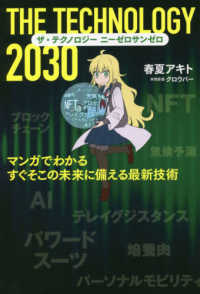Full Description
Since World War II, civil wars have replaced interstate wars as the most frequent and deadly form of armed conflict globally. How do we account for when and where civil wars are likely to occur, when and how they are likely to end, and whether or not they will recur? In this timely book, leading scholars accessibly guide students through cutting-edge research on the onset, duration, outcomes, and recurrence of civil wars, as well as the ongoing consequences of conflicts in war-torn countries such as Syria, Sudan, and Rwanda. In mapping out the current state of our knowledge about civil conflicts, the authors also identify what we do not know about civil wars.
With a consistent approach across chapters and through a wide variety of cases, the contributors collectively help readers understand some of the most pressing questions in conflict and security studies and illustrates how scholars answer them. This authoritative text offers both an accessible and current overview of the state of the field and an agenda for future research.
The second features:
An entirely new chapter on pro-government militias and rebels as criminal groups (Chapter 16)Analysis of new trends in civil war data collection that have enabled us to understand geographic and temporal patterns of armed conflictNew directions in transitional justice institutions in post-conflict environments, the "resource curse," the role of women, and the relationship between the environment and civil conflictNew material on mediation of conflict and peace agreement implementation, and peacekeeping Examples drawn from the Russia-Ukraine conflict.
Contents
List of Figures
List of Tables
Preface
Acknowledgments
Introduction: What Do We Know About Civil Wars?
Part I. Factors That Bring About Civil War
Chapter 1. Introduction: Patterns of Armed Conflict since 1945
Chapter 2. Antecedents of Civil War Onset: Greed, Grievance, and State Repression
Chapter 3. Identity and Civil War: Ethnic and Religious Divisions
Chapter 4. State Capacity, Regime Type, and Civil War
Chapter 5. Transnational Dimensions of Civil Wars: Clustering, Contagion, and Connectedness
Part II. Factors That End Civil Wars and Promote Peace
Chapter 6. Third Party Intervention, Duration, and Outcome of Civil Wars
Chapter 7. Ripe for Resolution: Third Party Mediation and Negotiating Peace Agreements
Chapter 8. Negotiated Peace: Power Sharing in Peace Agreements
Chapter 9. Breaking the Conflict Trap: The Impact of Peacekeeping on Violence and Democratization in the Post-Conflict Context
Chapter 10. The Legacies of Civil War: Health, Education, and Economic Development
Part III. Emerging Trends in Civil War Research
Chapter 11. Transitional Justice: Prospects for Post-War Peace and Human Rights
Chapter 12. Gender and Civil Wars
Chapter 13. Resource Wealth and Civil Conflict
Chapter 14. Environment and Conflict
Chapter 15. Trends in Civil War Data: Geography, Organizations, and Events
Chapter 16. Militias, Criminality, and Conflict
Bibliography
About the Editors
Index







